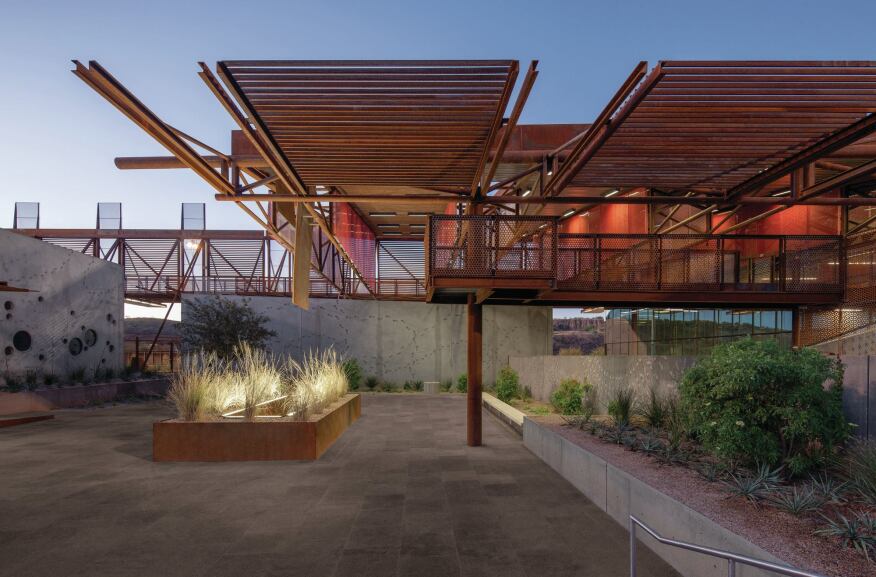
My reaction to the proposed executive order to mandate classical and traditional architecture for government buildings? I’m afraid I really don’t care that much. Of course it is ridiculous to enforce the use of any kind of style for the design of public buildings in a reputed democracy; yes, the problem with both Classical and traditional architecture is that they are the products of one particular cultural stream that, whether by intent or not (and more often latter), expresses the values of white, middle-class people of western European heritage; and yes, the order is potentially yet another example of the biases of a clueless President whose lack of discernment in architecture is evident in the blingy buildings he has imposed on cities around the world. But so what? As with most of this administration’s bluster, the order masks a much more sinister dismantling of quality control and investment in shared infrastructure. Let Trump have his GRFC columns and pediments, and let’s instead fight for what matters: quality government contributions to our democratic built environment. (I realize I am here paralleling the thoughtful reaction of the always excellent Justin Davidson.)
Ever since the forms developed to house temples and government structures in Greece and Rome were revived, revised, and adapted by Western architects starting in the Renaissance, their elements have appeared as malleable bits and pieces draped over or spread through functional structures. At its best, Classicism did represent shared values and aspirations—at least those of white, mainly Anglo-Saxon users, in projects such as Thomas Jefferson’s University of Virginia and the U.S. Capitol. Even better, when the means were available, Classicism added a sense of dignity to even the most functional buildings, such as Philadelphia’s Fairmount Water Works. There are good Classical government buildings, like those by Paul Cret. But there also many more mediocre and even ridiculous ones, like the old Executive Office Building in D.C.
In fact, good Classical buildings have all but disappeared in recent years. While some would ascribe that to the general decline of Western civilization, or even to a conspiracy by some vague cabal of Modernists (an architectural equivalent of the conspiracy, promoted by Attorney General Barr and Secretary of State Pompeo, of Christianity's ongoing removal from a state founded by atheists and deists), I think the answer is simpler: money. To make good Classical architecture means adding complexity in composition and detailing that takes time and craft. All that costs more.

On the other hand, the quality of government buildings, at least on a Federal level, seemed to be improving of late, in large part because of the GSA’s and the State Department’s Design Excellence programs. While many Federal buildings continue to be banal boxes, usually constructed by large firms who care more about costs and expediency than quality, architects have designed beautiful border stations and a few good embassies. Even more were in the pipeline until the Trump administration effectively strangled those programs.
The bigger problem is that we are not building what we really need: namely, facilities and infrastructure we can all use and that bring us together. Our suburban areas, where the most growth is taking place, often lack the focal points and the open and welcoming service areas that you need to shape a true community. Moreover, what we do build may look good from the outside but is often value engineered on the inside, where low-ceilinged, fluorescent-lit holding pens house the unlucky souls endlessly waiting to renew their driver's licenses. I would pay for daylight and openness before I would spend money on columns and pediments. If for some reason, however (like an executive order), such structures also needed to be traditional in appearance, that would be fine by me—so long as they work.
The big money is—or should be—in infrastructure. In the aftermath of the 2008 financial crisis, the Obama administration started quite a few renovation and construction projects through the American Recovery Act. Because investment in shared facilities usually gets stripped to the minimum in our current political climate, these projects featured little in the way of design. Road improvements got the nod over high speed train projects or other, more innovative work that would have helped us catch up with Europe and China. Now the only thing being built is a hugely expensive, ineffective, and unstable wall with few Classical elements to mask its exclusionary purpose. If Trump wants to build the railroads and flood control infrastructure we need, I would be happy to see them adorned with Classical elements that can bring scale and variety to large structures, even if I think we could do the same (and do it better) with formal elements tied to the place, time, and technology of construction.
The current debate about the executive order masks another larger issue: What we should be investing in is the renovation and reuse of existing buildings so as to reduce our use of non-renewable resources and our destructive output of carbon dioxide and other pollutants. I am not sure how columns work as solar collectors or if you can open up buildings with string courses, but I would love to see it happen.
Let Trump have his Classicism. Good architects can use any style. Let’s argue for openness, sustainability, and the deep beauty that comes from building truly democratic structures instead.
Aaron Betsky is a regularly featured columnist whose views and conclusions are not necessarily those of ARCHITECT magazine nor of the American Institute of Architects.
















